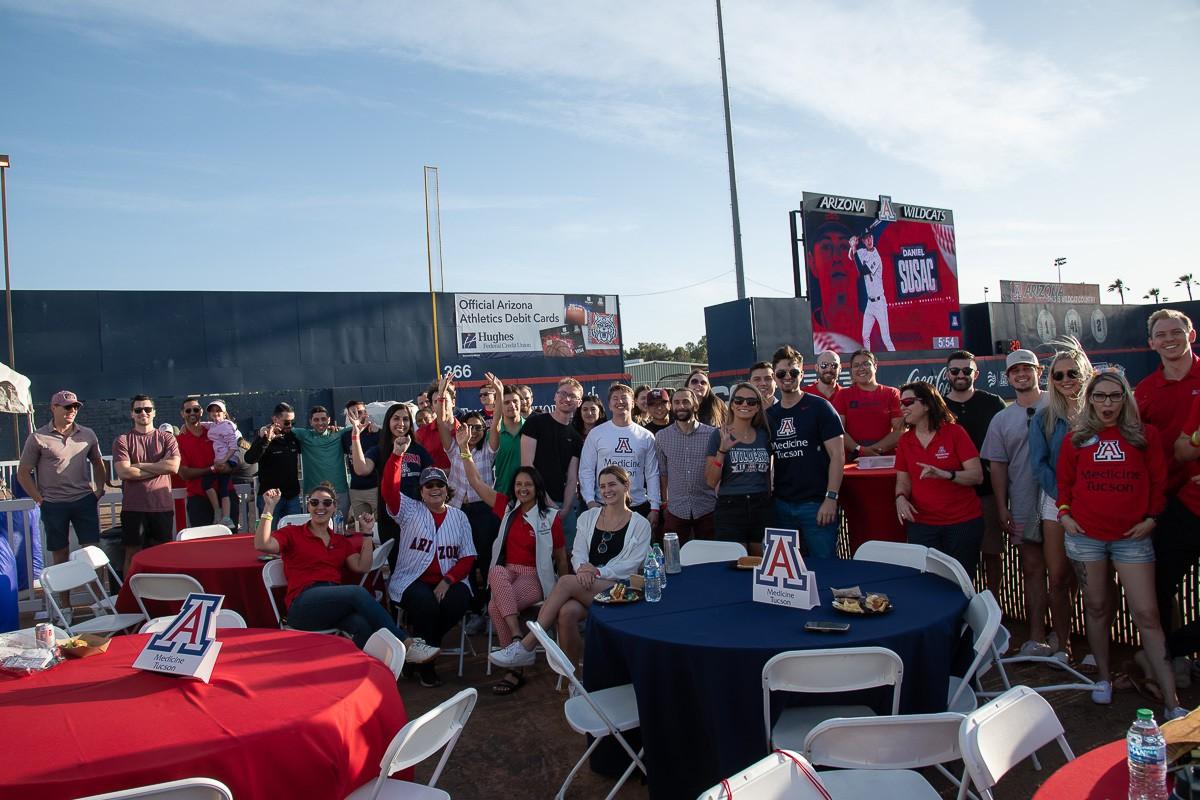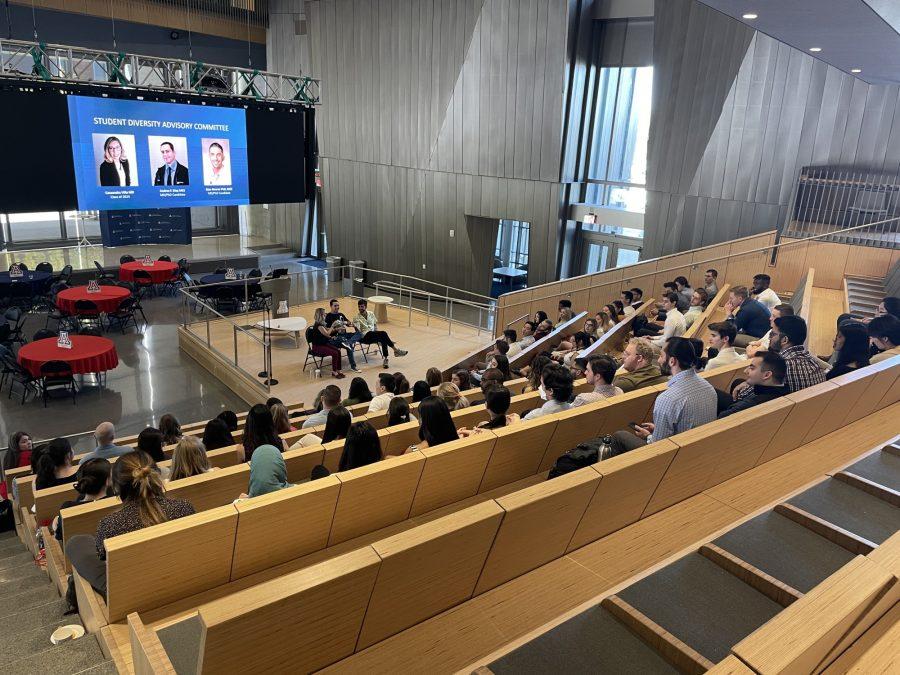Every year, prospective medical students around the nation revisit the medical schools where they have been accepted. Often called a “Second Look,” this two-to-three-day event allows students to explore campus, meet medical students and faculty and experience what it is like to be a matriculant at the hosting institution.
This past April, after two years of virtual events, the University of Arizona College of Medicine — Tucson hosted an in-person Second Look for the prospective class of 2026. The event, organized by UACOMT’s Office of Admissions, highlighted the institution’s clinical program, research opportunities and state-of-the-art training facilities.
For Tejal Parikh, MD, UACOMT’s associate dean of admissions and an associate professor of family and community medicine, the in-person Second Look served as a more immersive experience in contrast to virtual alternatives.
“The in-person Second Look gave students a chance to get a better feel for our campus by attending active learning classes, meeting faculty, having lunch with current students and reconnecting with the Office of Admissions to address any questions about our college and community,” Parikh said. “[Students] also observed current first-year medical students perform an interview and physical exam with a standardized patient and had the opportunity to practice their suturing skills at the Arizona Simulation Technology and Education Center.”
The in-person Second Look also allowed prospective students to explore the UA’s sports facilities, learn about Wildcat history and discover the cuisine and beauty that makes Tucson a remarkable place to live.
“Having the Second Look program in person this year after two years of hosting it virtually was extremely exciting,” said Emily Leyva, UACOMT director of admissions. “We were able to showcase the Dunlap Suite at the Arizona football stadium with its gorgeous mountain backdrop, the high-tech Health Sciences Innovation Building at the College of Medicine and finally Hi Corbett Field, where we gathered prospective and current students to watch a UArizona baseball game.”
For future students like Adrian Franco, the Second Look was an invaluable opportunity to learn more about UACOMT’s culture and interact with potential future colleagues.
“Everyone was kind and welcoming, from the professors and staff to the medical students,” Franco said. “Attending the Second Look in person allowed me to really get to know the people that will potentially become my future classmates.”

The Second Look program included opportunities for incoming students to ask deeper questions about the realities of medical training and the path to becoming a physician.
“We found ways to connect our accepted applicants with current medical students through student panels and Q&A sessions,” Leyva said. “The program was spread out through the week so students could attend sessions based on what was most important to them and their personal decision to attend medical school. In this way, we were able to spend more time each day getting to know of our accepted students.”
Parikh said Second Look was also an excellent opportunity to emphasize the school’s commitment to diversity and service.
“The mission of UACOMT is to select a diverse cohort of students who will become future leaders in medicine and who will advance health care for the distinct communities of Arizona and the United States,” Parikh said. “With this in mind, UACOMT works to create an inclusive community and culture that recognizes the importance of diversity as a key component for achieving excellence. Through the Second Look, we were able to showcase our rural and border health initiatives, our medical Spanish training tract and our commitment to community service.”
For Franco, UACOMT’s attention to working with underserved patients was a major factor in his decision to select the UACOMT over other institutions.
“I was grateful to learn from faculty and students about how incoming medical students can contribute to the care of underserved populations,” Franco said. “We can serve by participating in the CUP Clinics or by planning service projects with the Office of Diversity, Equity, and Inclusion. The opportunities are endless.”
The Second Look is the end of a long journey for both prospective students and the admissions team. It is the culmination of years of hard work, standardized exams, writing essays, submitting applications and attending interviews.
Leyva said participating in the admissions process is a personally rewarding experience.
“One of the things I value most in my role is the ability to teach applicants about the admissions process and help them strengthen their application,” Leyva said. “I have watched applicants move through the admissions process and ultimately get accepted by our committee. When I call them to tell them the good news, I sometimes share tears of joy with applicants.”
The Second Look is also the start of a longer, arduous, yet rewarding journey in medicine. For Parikh, a practicing physician herself, meeting and working with prospective students is a career-affirming experience.
“Personally, I feel that I have the best job,” Parikh said. “I get to meet students on interview day and read their applications. I learn about their motivations to become a physician and all the experiences that solidified their interest in medicine. At the White Coat ceremony, when they walk across the stage and don their white coats, I am as proud as their friends and family. After all, I know the hard work they put into getting accepted into medical school. I’m honored to work with all these incredible students and future physicians.”
After exploring campus, meeting students and faculty and reflecting on the opportunities provided by UACOMT, Franco has made his decision.
“I am happy and excited to say that UACOMT will be my new home,” Franco said.
Follow Andres Diaz on Twitter









